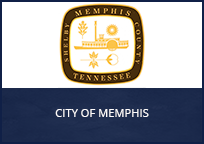Map 901: Building Rich Interior Hazard Maps for First Responders

City of Memphis
Indoor mapping is the next big frontier for the geospatial field. Lack of adequate indoor maps is a well-documented public safety issue reasserted with each building fire, earthquake, mass shooting, and other tragedies. While technology exists capable of mapping buildings, very few standards and best practices are available to create reliable, affordable, and consistent indoor maps. Accurate building models with detailed annotations are critical to the safety of first responders and building occupants during emergency operations. In this collaboration between the City of Memphis and the University of Memphis, we will survey nine facilities with 1.86 million square feet of indoor space to produce annotated 3D point cloud models, 360-degree camera images and other sensor data. We will develop effective mechanisms to annotate the point cloud data with public safety objects.
Quick Resources
Project Overview
Through the City’s GIS team, the datasets will be shared with public safety agencies in the City and County to obtain their feedback. We will also share our data with various public stakeholders through the City’s open data platform (data.memphistn.gov). Moreover, two buildings will be open for additional evaluation activities beyond the project period.
We have selected Velodyne’s Puck 3D LiDAR as our mapping device in both manned and automated operations. For survey of the buildings, we will partner with GreenValley International to use their LiBackpack which integrates the Puck LiDAR, an Inertial Measurement Unit, data storage, and a tablet. We will add a 360° camera, temperature, humidity, and acoustic sensors to the backpack to supplement the point cloud data with time-synchronized images and sensor data.
Furthermore, we will explore the following approaches to achieve high-quality data collection, accurate data analysis, efficient data storage and distribution, and strong security. First, in order to survey the buildings quickly and completely, we will use real-time processing and visualization methods to identify occluded areas and avoid repeatedly scanning surveyed areas. Second, we will first process the visual imagery to search for objects using a reference image database and extract features from each object. Various machine learning algorithms will then be used on these features and the other sensor data to identify objects of interest to public safety users. Third, we will use hierarchical data names based on Octree representations of 3D point clouds to facilitate data compression, retrieval and manipulation. Fourth, at data production time, we will encrypt our data with per-namespace keys to prevent unauthorized access and give fine-granularity access to authorized users.
This project will be led by the City’s Chief Information Officer, Michael Rodriguez, and Chief Data Officer, Todd Hollenbeck, both with extensive experience in leading R&D technology initiatives for FedEx. The principal investigators at the University are Prof. Lan Wang of Computer Science and Prof. Eddie Jacobs of Electrical and Computer Engineering. Their research in image sensing, named data networking, security, multi-modal sensing system, and autonomous vehicles is highly relevant to this project. They have both successfully secured, managed, and completed research projects sponsored by the NIST, NSF, DoD, and private companies.
University of Memphis is providing access to several of its facilities and staff. GreenValley International is providing loaner equipment and software.
View the award press release to read more about the Point Cloud City funding opportunity.
<< Back to the PSIAP - Point Cloud City Page
* As a service to the research community, NIST provides the links to the datasets created by financial assistance recipients that received awards under the NIST Public Safety Innovation Accelerator Program – Point Cloud City Notice of Funding Opportunity. NIST had no role in the creation of the datasets other than to fund these awards. NIST makes these datasets available “AS-IS” and provides no warranties, express or implied, of merchantability or fitness for a particular purpose. NIST makes no representations that the use of the datasets will not infringe any patent or proprietary rights of third parties. Providing a link to these datasets does not constitute a NIST endorsement of the third-party institutions involved. NIST makes no representations about the quality, reliability, or any other characteristic of the datasets.

